
Hartington is a village in the centre of the White Peak area of the Derbyshire Peak District, England, lying on the River Dove which is the Staffordshire border. According to the 2001 census, the parish of Hartington Town Quarter, which also includes Pilsbury, had a population of 345 reducing to 332 at the 2011 Census. Formerly known for cheese-making and the mining of ironstone, limestone and lead, the village is now popular with tourists.
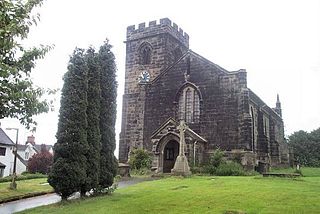
Hartshorne is a village and civil parish in the English county of Derbyshire. The population of the civil parish as of the 2011 census was 3,888. It is north of the town of Swadlincote.

Catmore is a civil parish and small village in West Berkshire about 5+1⁄2 miles (9 km) southeast of Wantage. Catmore is in the Berkshire Downs and the centre of the village is about 575 feet (175 m) above sea level. The 2001 Census recorded a population of only 28, making Catmore the least populous parish in Berkshire.
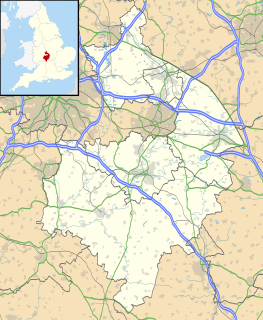
Arrow is a village in the Stratford-on-Avon district of Warwickshire, England. Together with the entirely rural hamlet of Weethley, it forms since 2004 the civil parish of Arrow with Weethley. The parish lies midway between Redditch and Evesham.
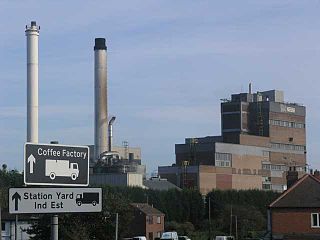
Hatton is a village and civil parish in South Derbyshire, England. It is 6 kilometres (3.7 mi) north of Burton upon Trent, 20 kilometres (12 mi) west of Derby and 40 kilometres (25 mi) east of Stoke-on-Trent. The population of the civil parish as of the 2011 census was 2,785. It adjoins Tutbury to the south.
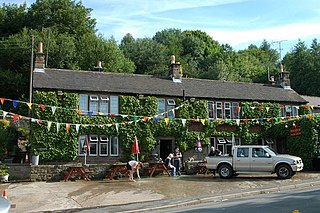
Birchover is a village and civil parish in the Peak District National Park in Derbyshire, England, five miles north-west of Matlock. At the 2001 Census, it had a population of 362. Eagle Tor is a small hamlet on the north western edge of the parish.

Bradley is a village and civil parish in Derbyshire just east of Ashbourne. The population of the civil parish taken at the 2011 Census was 313. Other neighbouring parishes include Hulland and Yeldersley.
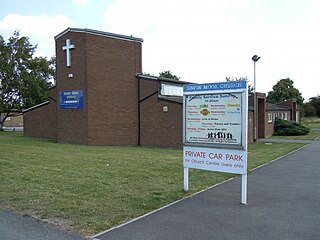
Sinfin is a suburb of Derby, England, 3 miles (4.8 km) southwest of the city centre on its southern outskirts. The ward, which includes Osmaston as well as Sinfin itself, had a population of 15,128 in 2011. Historically, Sinfin and Osmaston were separate villages before being swallowed up by the expansion of Derby. Osmaston is characterised by inter-war housing developments while much of the housing in Sinfin is post-war. Between the two suburbs lies a more industrialised area dominated by the Rolls-Royce works.

Arleston is a hamlet in the South Derbyshire district of Derbyshire, England, about 4 miles (6.4 km) south of the centre of Derby. It is located 1.2 miles (1.9 km) northwest of Barrow upon Trent and is part of that village's civil parish. The Trent and Mersey Canal passes through Arleston.

Sudbury is a village and civil parish in Derbyshire, England, located about 9 miles (14 km) south of Ashbourne. It is part of the Derbyshire Dales district. The population as recorded at the 2001 Census was 976, increasing to 1,010 at the 2011 Census. The £0.5m A50 bypass opened in 1972. The parish includes the hamlets of Aston, Aston Heath and Oaks Green.

Brailsford is a small red-brick village and civil parish in Derbyshire on the A52 midway between Derby and Ashbourne. The civil parish population at the 2011 Census was 1,118. The village has a pub, a post office and a school. There are many fine houses in the district including two 20th century country houses: Brailsford Hall built in 1905 in Jacobean style, and Culland Hall.
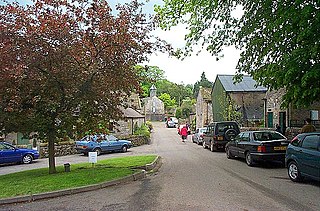
Middleton, often known as Middleton-by-Youlgreave or Middleton-by-Youlgrave to distinguish it from nearby Middleton-by-Wirksworth, is a village in the Peak District, Derbyshire, England. The appropriate civil parish is called Middleton and Smerrill. The population of this parish was 137 at the 2011 Census. It lies south west of Youlgreave, above the River Bradford. Its main industries are farming and tourism.

Cowley is a small dispersed hamlet in North East Derbyshire, consisting of a few private houses and functioning farms strung out along Cowley Lane, which runs between the village of Holmesfield and the "Hill Top" neighbourhood of the town of Dronfield. Until 2001 it held an annual well dressing in the grounds of Cowley Mission, a small chapel founded in 1888 and still active.

Holbrook is a village in Derbyshire at the southern end of the Pennines around five miles north of Derby, England. The population of the civil parish as of the 2011 census was 1,538.

Pilsbury Castle was a Norman castle in Derbyshire near the present-day village of Pilsbury, overlooking the River Dove.
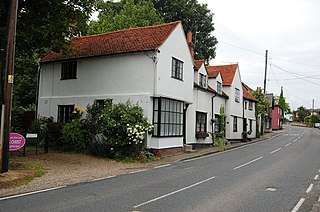
Woodham Ferrers is a small village about 7.5 miles (12 km) southeast of Chelmsford, located between South Woodham Ferrers and Bicknacre, in the civil parish of Woodham Ferrers and Bicknacre in the county of Essex, England. The village is often shortened to Woodham by those in the area. The village is sometimes erroneously referred to as North Woodham due to its geographical relationship with South Woodham Ferrers. In 2018 it had an estimated population of 617.
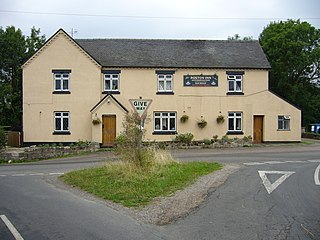
Roston is a hamlet in Derbyshire, England. It is located north of Rocester. The Roston Inn is at the junction of Mill Lane and Lid Lane in the hamlet. Roston is in the parish of Norbury with Roston.

Croxall is a hamlet and former civil parish in England that was historically in Derbyshire, but since 1895 has been part of Edingale parish, Staffordshire. The settlement today is mainly the Church of England parish church of St John and Croxall Hall. Population details for the 2011 census can be found under the civil parish.

Newton and Noss is a civil parish in the South Hams district of Devon, England comprising the villages of Newton Ferrers and Noss Mayo and outlying hamlets such as Membland.The population of the parish taken at the 2011 census was 1,814.

The Ferrers family were a noble Anglo-Norman family that crossed to England with the Norman Conquest and gave rise to a line that would hold the Earldom of Derby for six generations before losing it in rebellion. They also gave rise to several lines that held English peerages, the longest-living going extinct in the male line in the 15th century, as well as a Norman branch of the family that persisted into the 13th century. A French line persisted into the 16th century.





















